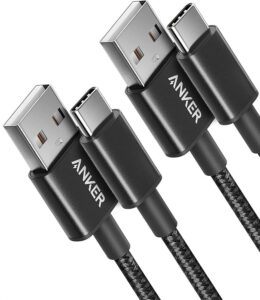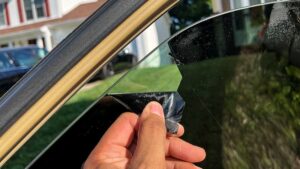Looking to test your golf cart charger? We’ve got you covered! Testing a golf cart charger is essential to ensure smooth performance on the green. In this article, we will guide you through the entire process, from start to finish. Whether you’re a seasoned golfer or a beginner, learning how to test a golf cart charger is a valuable skill that can help you identify any issues and keep your cart running at its best. So, let’s dive right in and explore the steps to effectively test a golf cart charger.
How to Test a Golf Cart Charger
Golf carts have become an increasingly popular mode of transportation in various settings such as golf courses, residential communities, and resorts. Like any other electric vehicle, golf carts rely on a charger to recharge their batteries. However, sometimes chargers can malfunction or fail to perform at their optimum level. In this blog post, we will explore how to test a golf cart charger to ensure it is functioning correctly and effectively.
Understanding the Basics of a Golf Cart Charger
Before diving into the testing process, it’s important to have a basic understanding of how a golf cart charger works. A golf cart charger is designed to convert AC (alternating current) power from an electrical outlet into DC (direct current) power that can be stored in the cart’s batteries. The charger regulates the charging process to prevent overcharging or undercharging, which can harm the batteries.
Preparing for Testing
Before you begin testing the golf cart charger, there are a few essential steps you need to follow:
- Ensure safety: Safety should always be a top priority when working with electrical equipment. Make sure to wear personal protective equipment (PPE) such as safety glasses and gloves.
- Disconnect the charger: Before testing, it is crucial to disconnect the charger from the golf cart and unplug it from the electrical outlet. This will prevent any accidental electric shocks or damage.
- Inspect the charger: Take a close look at the charger for any visible signs of damage or wear. Check the power cord, plug, and connectors for any loose connections or frayed wires. If you notice any issues, it’s recommended to address them before proceeding with the testing.
Testing the Golf Cart Charger
Now that you have prepared for the testing process let’s dive into the step-by-step instructions for testing a golf cart charger:
Step 1: Testing the Power Cord
The power cord is an essential component of the golf cart charger. To test the power cord, follow these steps:
- Visually inspect the power cord for any visible damage. Look for cracks, cuts, or exposed wires. If you notice any signs of damage, it’s crucial to replace the power cord before testing.
- Plug the power cord into a properly grounded electrical outlet.
- Using a multimeter set to the AC voltage setting, touch the multimeter probes to the prongs of the power cord plug. Ensure that you hold the probes on the metal prongs and not the plastic part of the plug.
- Read the voltage displayed on the multimeter. It should match the voltage rating specified on the charger. If the displayed voltage is significantly lower or higher, there may be an issue with the power cord.
Step 2: Testing the Charger Output
The output of the charger refers to the charging voltage it provides to the golf cart batteries. To test the charger output, follow these steps:
- Locate the output connection on the charger. It is usually labeled with a (+) and (-) sign.
- Connect the multimeter probes to the corresponding charger output terminals, making sure to match the positive (+) and negative (-) terminals.
- Set the multimeter to the DC voltage setting.
- Plug in the charger and turn it on.
- Read the voltage displayed on the multimeter. It should match the charging voltage specified by the manufacturer. If the voltage is significantly lower or higher, there may be an issue with the charger’s output.
Step 3: Testing for Proper Charging Behavior
In addition to checking the voltage, it’s essential to observe the charger’s behavior during the charging process. Here are some factors to consider:
- Charging time: Observe how long it takes for the charger to fully charge the batteries. The charging time may vary depending on the charger’s specifications and the battery’s capacity. If the charging time exceeds the expected duration, there may be an issue with the charger.
- Temperature: Monitor the temperature of the charger while it is in operation. Overheating can indicate a problem with the charger, such as a faulty cooling system or internal components.
- Charging termination: Once the batteries reach their full charge, the charger should automatically stop supplying power. If the charger continues to provide a charge even after reaching full capacity, it may overcharge the batteries, leading to potential damage.
Step 4: Testing the Charger’s Safety Features
Modern golf cart chargers often come equipped with various safety features to protect the batteries and prevent accidents. To test these safety features, consider the following:
- Overcharge protection: Verify that the charger has built-in overcharge protection. This feature prevents the charger from supplying excessive power that could harm the batteries. Check the charger’s manual or contact the manufacturer for specific instructions on testing this feature.
- Short circuit protection: Ensure that the charger has a mechanism to detect and prevent short circuits. Short circuit protection prevents potential damage to the charger and batteries. Again, consult the charger’s manual or the manufacturer for guidance on testing this feature.
Testing your golf cart charger is an important step in ensuring the efficiency and safety of your golf cart’s battery charging system. By following the step-by-step process outlined in this article, you can identify any potential issues and take appropriate action to rectify them. Remember to always prioritize safety and consult the charger’s manual or manufacturer for specific instructions and guidelines.
With regular testing and proper maintenance, you can keep your golf cart charger in excellent working condition and prolong the life of your batteries, ensuring many enjoyable rides on the golf course or around your community.
DPI Battery Charger 36 and 48 Volt | Golf Cart Charger Diagnostic
Frequently Asked Questions
How do I test a golf cart charger?
To test a golf cart charger, follow these steps:
Can I test a golf cart charger without a multimeter?
While it is recommended to use a multimeter for accurate testing, you can perform a basic test without one. However, keep in mind that the results may not be as precise.
Are there any signs that indicate a faulty golf cart charger?
Yes, there are a few signs that may indicate a faulty golf cart charger. These include:
What should I check if my golf cart charger is not working?
If your golf cart charger is not working, you should check the following:
How can I determine if the output voltage of my golf cart charger is correct?
To determine if the output voltage of your golf cart charger is correct, perform the following steps:
How can I test the charging capability of my golf cart charger?
To test the charging capability of your golf cart charger, follow these steps:
Final Thoughts
Testing a golf cart charger is a crucial step to ensure proper functionality. Start by visually inspecting the charger for any visible damage or loose connections. Then, use a multimeter to check the voltage output of the charger. Connect the positive lead to the positive terminal, and the negative lead to the negative terminal. Verify if the voltage matches the charger’s specifications. Next, test the charger’s load capacity by connecting it to a fully charged battery and monitoring the charge rate. Finally, ensure that all safety features, such as overcharge protection, are working correctly. By following these steps, you can effectively test a golf cart charger and ensure its optimal performance.



